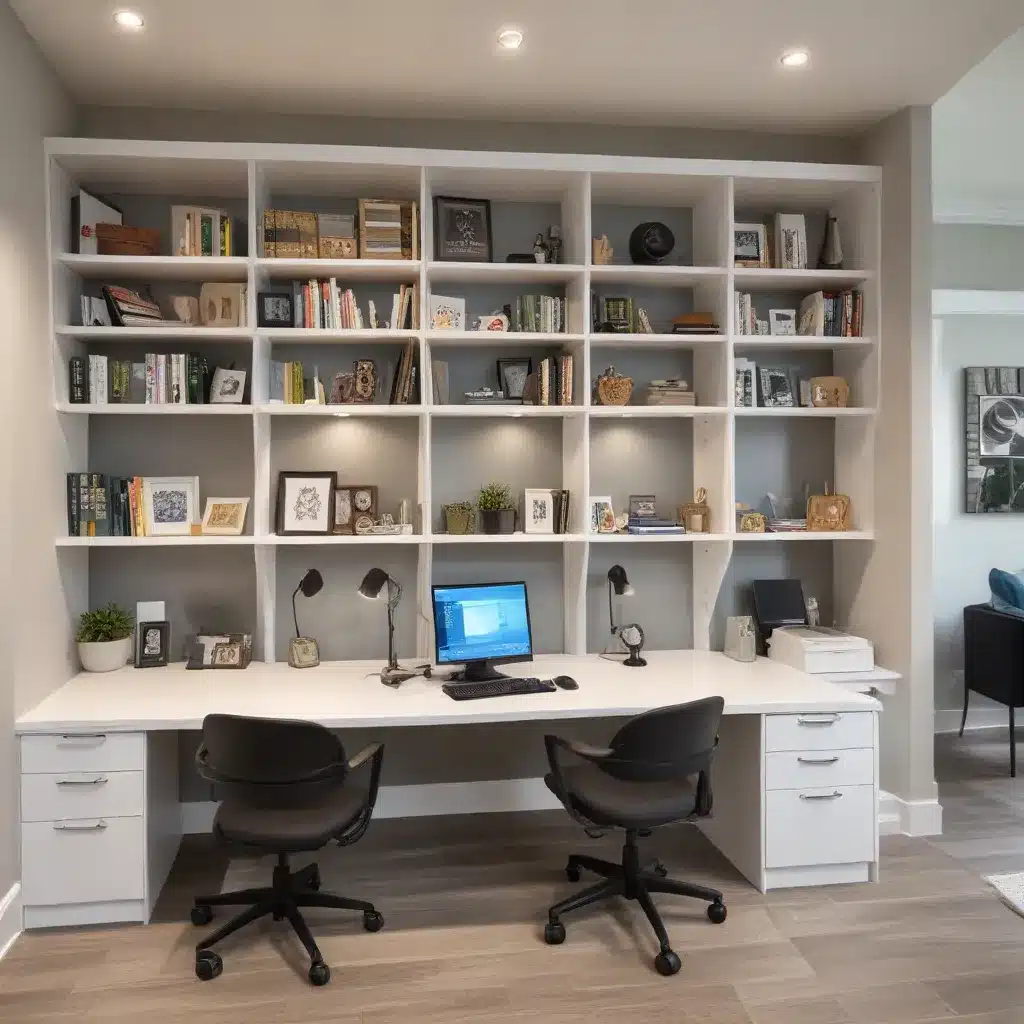The kitchen is the undisputed heart of the modern home – a bustling epicenter where families gather, meals are prepared, and memories are made. As our lifestyles have evolved, the role of the kitchen has expanded beyond its utilitarian roots, becoming a dynamic, multifunctional space that demands thoughtful renovation strategies.
For families looking to transform their kitchen into a truly functional, family-centric haven, designing effective workstations is a crucial consideration. These specialized zones within the kitchen serve as the nerve centers of daily domestic activities, facilitating everything from food preparation to homework and household organization. By thoughtfully planning and optimizing these workstations, families can create a kitchen that seamlessly supports their unique needs and lifestyle.
Family Workstation Design Considerations
Spatial Planning
When it comes to designing family-friendly workstations, spatial planning is paramount. The kitchen’s layout must be carefully considered to ensure the workstations are strategically positioned for maximum efficiency and accessibility. This may involve rethinking the traditional kitchen triangle concept (sink, stove, and refrigerator) in favor of a more dynamic, multi-zoned arrangement that caters to the diverse needs of modern families.
Ergonomic Workspace Layout
Ergonomics play a pivotal role in crafting effective workstations. Factors such as counter heights, appliance placement, and storage solutions must be meticulously planned to minimize physical strain and promote a comfortable, user-friendly experience. By optimizing the ergonomic design of these workstations, families can streamline their daily tasks and foster a more harmonious kitchen environment.
Workflow Integration
Seamless workflow integration is another essential consideration in family workstation design. The strategic placement of workstations should facilitate a natural, intuitive flow of movement, allowing family members to transition effortlessly between various kitchen tasks. This could involve positioning a homework or computer station adjacent to the food preparation area, or integrating a family communication center within easy reach of the main work zones.
Renovation Strategies for Functional Workstations
Maximizing Efficiency
When embarking on a kitchen renovation, a key priority should be maximizing the efficiency of family workstations. This may involve incorporating built-in storage solutions, such as pull-out pantries, drawer organizers, and vertical storage systems, to ensure frequently used items are easily accessible. Additionally, task lighting and ergonomic fixtures can enhance the functionality of these workstations, making everyday tasks more comfortable and streamlined.
Aesthetic Enhancements
While functionality is paramount, families should not overlook the importance of aesthetic enhancements when renovating their workstations. Thoughtful design choices, such as coordinated cabinetry, statement lighting, and personalized accents, can transform these utilitarian zones into visually appealing and inviting spaces. By seamlessly blending form and function, families can create workstations that are both practical and visually captivating.
Adaptable Design
In the ever-evolving landscape of family dynamics, it’s crucial to incorporate adaptable design principles into the renovation of family workstations. Modular storage systems, multifunctional furnishings, and flexible layouts can enable families to easily reconfigure and customize their workstations as their needs change over time. This forward-thinking approach ensures the kitchen remains a versatile and future-proof space that can grow alongside the family.
Crafting Harmonious Workspaces
Balancing Form and Function
Achieving the perfect balance between form and function is the hallmark of a successful family workstation design. By carefully considering both the practical and aesthetic aspects of these zones, families can create spaces that are not only highly functional but also visually appealing and cohesive with the overall kitchen aesthetic. This harmonious integration of design and functionality can transform the kitchen into a true centerpiece of the home.
Personalized Touch
Incorporating a personalized touch into family workstations is a powerful way to foster a sense of ownership and belonging. This could involve integrating family-centric elements, such as custom-designed magnetic boards, personalized storage solutions, or even designating a homework or art station that reflects the unique interests and personalities of each family member.
Mindful Zoning
Thoughtful zoning of the kitchen’s workstations can also contribute to a harmonious and functional space. By strategically separating task-specific areas, such as food preparation, cleanup, and family organization, families can minimize disruptions and create a more organized, streamlined workflow. This mindful approach to zoning can also help to reduce clutter and promote a sense of calm and focus within the kitchen environment.
Sustainable Solutions for Family Workstations
Eco-Friendly Materials
As families increasingly prioritize sustainable living, eco-friendly materials have become a crucial consideration in kitchen renovations. When designing family workstations, homeowners can explore options such as low-VOC paints, renewable wood or bamboo cabinetry, and energy-efficient appliances to create a greener, more environmentally responsible kitchen space.
Energy-Efficient Features
In addition to material selection, families can also incorporate energy-efficient features into their workstation designs. This may include LED task lighting, smart or programmable appliances, and insulation strategies to optimize the kitchen’s energy performance and reduce the family’s carbon footprint.
Flexible Future-Proofing
To ensure long-term sustainability, it’s important to approach family workstation design with a future-focused mindset. Incorporating flexible and modular solutions, such as adjustable countertops or adaptable storage systems, can enable families to easily reconfigure and repurpose their workstations as their needs evolve over time. This future-proofing approach helps to minimize the need for costly and resource-intensive renovations down the line.
By thoughtfully considering the design considerations, renovation strategies, and sustainable solutions outlined in this article, families can transform their kitchen into a harmonious, functional, and eco-friendly hub that truly supports their unique lifestyles. For those seeking further inspiration and guidance, be sure to explore the resources available on the Reluctant Renovator website, where you’ll find a wealth of insights and expert advice to help you create your dream family workstations.




